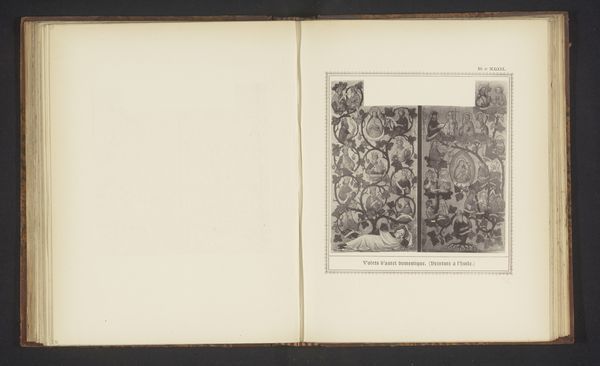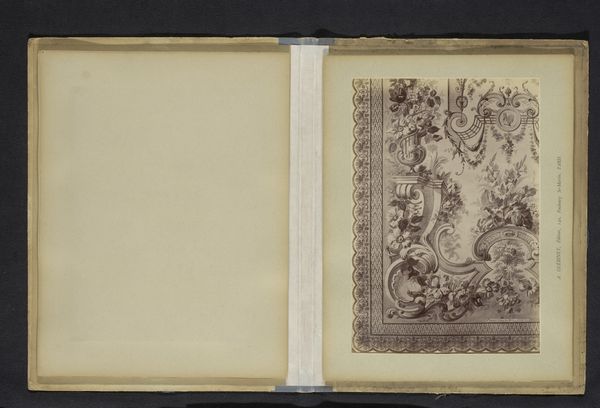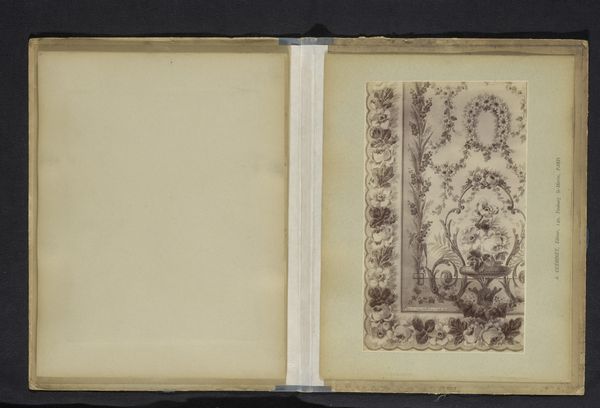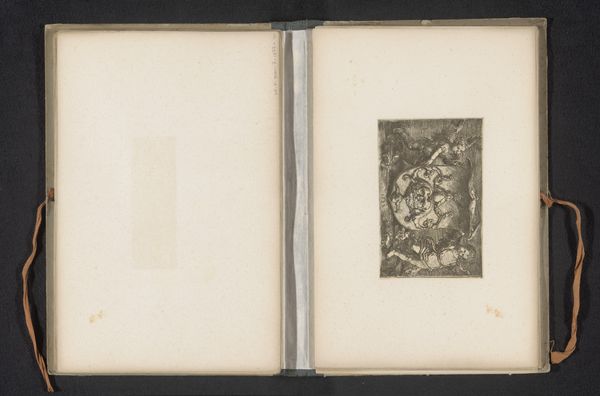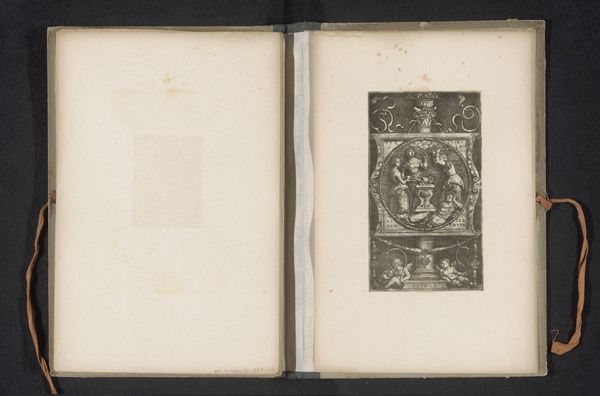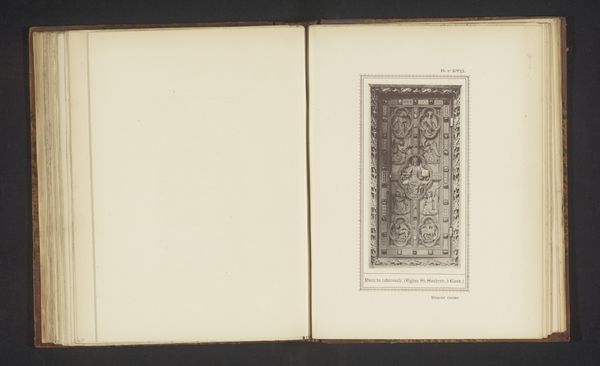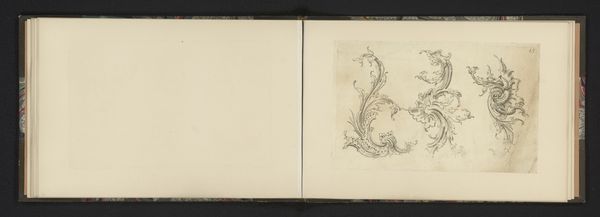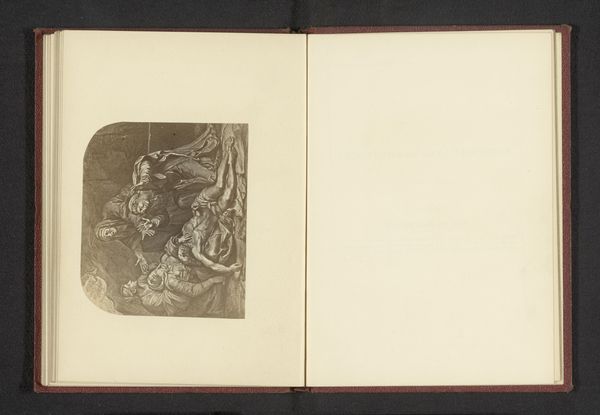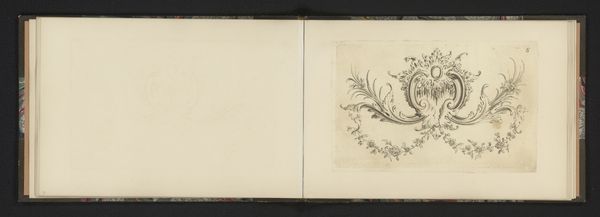
Twee ontwerpen van pagina-hoofden uit boeken, waarvan één houtsnede en één fotomechanische reproductie before 1896
0:00
0:00
drawing, graphic-art, ornament, print, paper
#
drawing
#
graphic-art
#
ornament
#
medieval
# print
#
book
#
paper
#
coloured pencil
#
geometric
#
line
Dimensions: height 161 mm, width 186 mm
Copyright: Rijks Museum: Open Domain
Curator: Here we have Joseph Casier’s "Twee ontwerpen van pagina-hoofden uit boeken, waarvan één houtsnede en één fotomechanische reproductie," created before 1896. Two book header designs, one woodcut and one photomechanical reproduction, meticulously arranged side-by-side. What’s your initial impression? Editor: Immediately, I’m struck by how dense and contained each design is; the detailed linework has such a miniaturist intensity, almost like looking into an enchanted jewel box. Curator: That's an insightful take. Casier, deeply entrenched in the aesthetics of medievalism, was fascinated by artisanal crafts and their societal implications during rapid industrialization. The juxtaposition here is critical: woodcut, a laborious, hand-carved craft, against photomechanical reproduction, a product of industrial technology. Editor: Right, that tension. The woodcut design has this powerful symbolism – a dove, entwined ribbons – against a reproduction; the second design seems to lack some of that... weight. It’s technically proficient, but something feels missing, doesn't it? Curator: Precisely. Casier likely intended to question the values placed on original craftsmanship versus mass-produced design. How does mechanization affect the 'aura', so to speak, of a printed image, its cultural and economic worth? His concern reflects a broader Arts and Crafts critique of the era's dehumanizing factories. Editor: The materials themselves make such a difference; there is so much texture on the page; those raised textures are lovely to see! It also highlights how artistic intent navigates production capabilities, even dictating material expression to some degree. I find the tension very evocative and the textures intriguing. Curator: Indeed. By showcasing both processes within the same frame, Casier forces us to confront the implications of each. Consider the labour invested, the accessibility for the consumer, and, fundamentally, what we consider to be art in a world increasingly dominated by technological advancements. Editor: Thinking about labor... imagine setting each of these designs within a novel, how the story might be unconsciously colored! Alright, alright! This contrast definitely got me pondering craft, commodity, and the soulful imprint. Curator: Exactly. Casier nudges us to consider the subtle value judgements inscribed within our objects. He masterfully weaves material, method, and social consciousness together.
Comments
No comments
Be the first to comment and join the conversation on the ultimate creative platform.
